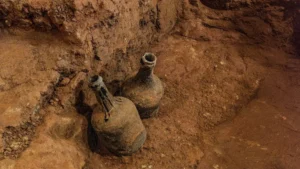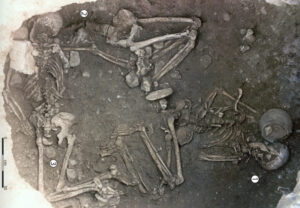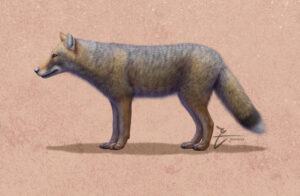Archaeologists have found two Roman coins on an uninhabited island in the Baltic Sea. The island of Gotska Sandön lies halfway between Sweden and Estonia. Surprised researchers are trying to unravel the mystery of how the coins arrived there.
After discovering evidence of fire sites on the island, the team from Stockholm’s Södertörn University decided to use metal detectors on the beaches. They eventually found the two small silver coins.
“We were so happy. We have this site, but we don’t know what it is. But now that we have the coins there, it makes it even more interesting to continue to excavate,” archaeologist Johan Ronnby said.
Roman denarii
The silver coins are both Roman denarii, the currency of the Roman Empire. However, they come from slightly different periods. The first is from the reign of Emperor Trajan (98-117 AD). The second is from the time of Emperor Antoninus Pius (138-161 AD).

Gotska Sandön lies between Sweden and Estonia in the Baltic Sea. Photo: Google Maps
Each coin weighs around four grams. One denarius would have been approximately one day’s wages for a laborer.
Gotska Sandön has almost always been uninhabited, other than some lighthouse keepers in the 19th century. The island has no towns or villages, and there is no record of past communities on it. In more recent times, seal hunters and fishermen have occasionally visited the island during the summer. It seems unlikely that they would have carried 2,000-year-old Roman coins with them.
The research team has multiple theories about how the coins got there but a conclusive answer may never be found.
Theories
One possibility is that Norse traders left the coins behind when stopping on the island for shelter during a storm. This could also explain the evidence of fires.
Survivors of a shipwreck could also have left the coins. The sea around the island is notoriously rough, and several ships have gone down in the area.

Gotska Sandön. Photo: Shutterstock
A third theory is that a Roman ship sailing north could have stopped at the island, though there are no records of this. Roman texts do mention the Baltics. However, this theory is highly unlikely. Previous archaeologists found Roman coins on the nearby island of Gotland, but Gotland is 40km to the south of the much smaller Gotska Sandön. It has several towns and villages, and actively traded with mainland Europe.
Interestingly, during the 19th century, one of the Gotska Sandön lighthouse keepers said that he had found a Roman coin, but no one believed him. This discovery suggests that he was probably correct and that these are actually the second and third coins from the island.
The research team plans to continue its excavations later this year.






